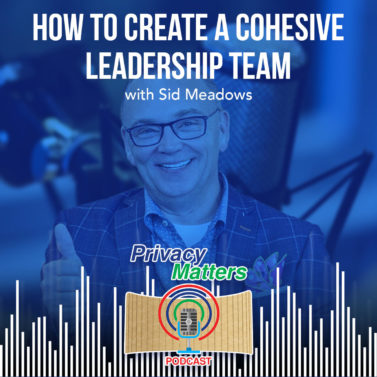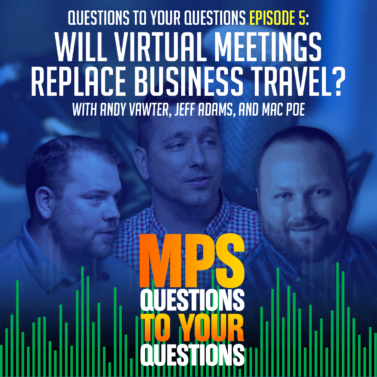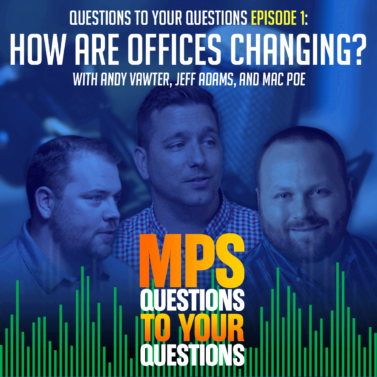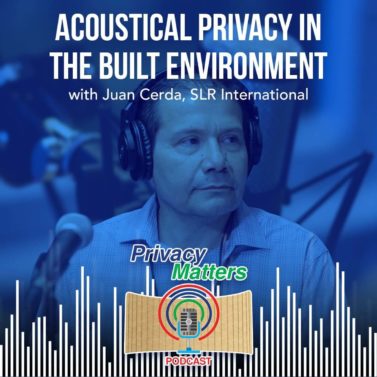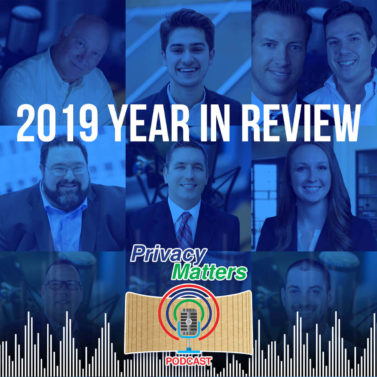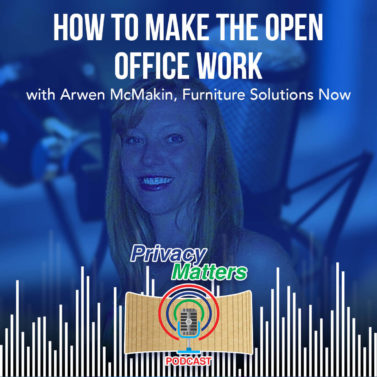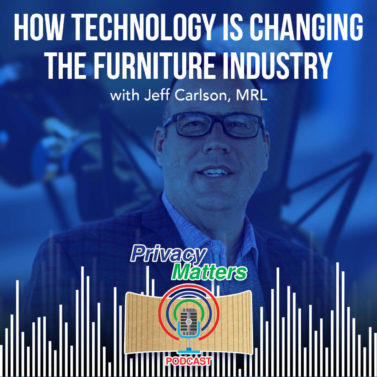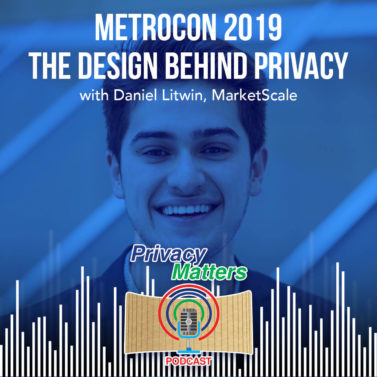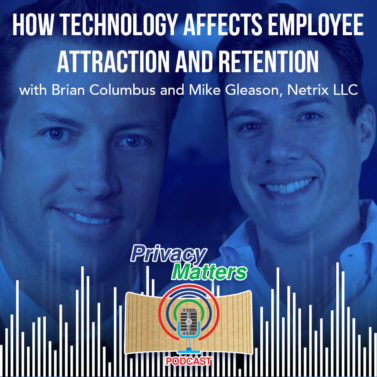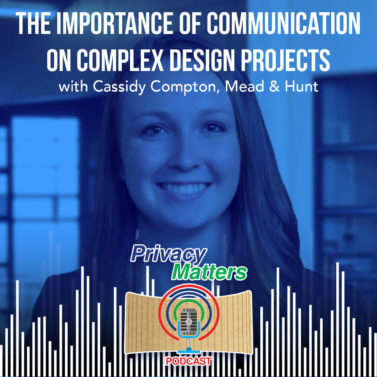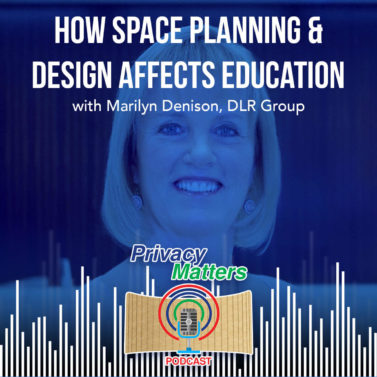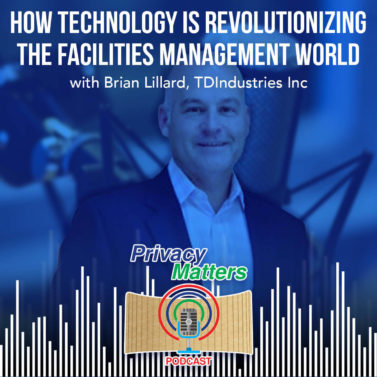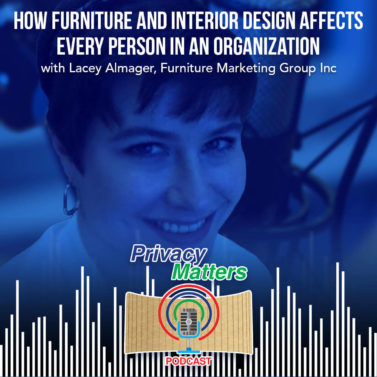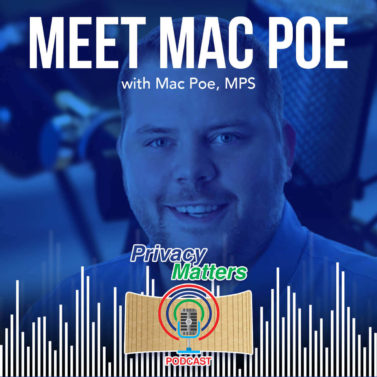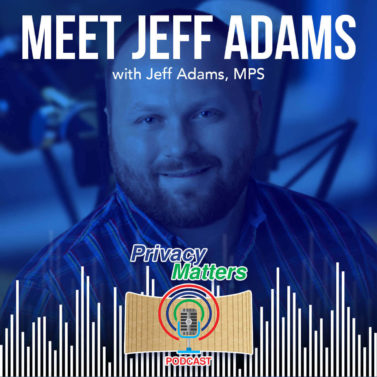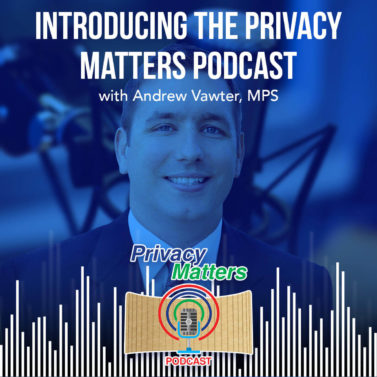Andy: [00:40]
Thanks for being here. So I get the name right? Juan: Cerda. Is that correct? Okay. So Juan:, you’re an acoustical consultant for SLR. I’m going to let you answer that.
Juan: [00:54]
Yes, yes, yes. I’m a senior acoustical consultant, worked for SLR HFP for 25 years.
Andy: [01:03]
Wow. Okay. Wow. Very experienced.
Juan: [01:06]
Yes.
Andy: [01:06]
Kind of seen it. All right. Seen a lot. There we go. So you got into acoustics. You’re a young man, so 25 years ago, you know. Yeah, yeah. Tell me about how it all started.
Juan: [01:20]
Well, I guess out of school and was working for a company, a civil engineering company that had an acoustics and vibration department. I was hired to work on a vibration monitoring project. And I just kind of grew into the acoustics part and have done it for 25 years now, plus 25 years.
Andy: [01:55]
So, you went to school to do this?
Juan: [01:56]
No, no, no. My background was in engineering technology.
Andy: [02:00]
Okay. So, okay. Excellent. So what does it take to start with the background there and then end up kind of in acoustics? Does it just take a job and opportunity or is there a specific…?
Juan: [02:13]
It’s an opportunity. I mean, there are programs that are focused on acoustics, but the majority of the people that work here, his background is in engineering, physics and we also have several people whose background is in music theory.
Andy: [02:40]
So, okay. So they’re audiophiles when it comes to music and then this is just the natural outgrowth of that kinda like most AV guys I know, you know, they’re not overly technical, they just love music and audio and then they kind of end up selling all the equipment that goes with it. So, yeah. Okay. So you know, so you’ve been doing this for 25 years, so give us a rundown of the kind of what you know, your organization is probably a lot broader than you as far as I’m sure they’re specialists outside of what you do, but based on what you do, you know, what are some of the common areas and things that you end up working on? Okay.
Juan: [03:14]
Yeah. As a company, SLR does a lot of other things other than acoustics, but yeah, most of the people in this office work in acoustics and noise control. And within that group, we have people that kind of focus either on architectural acoustics or industrial.
Andy: [3:45]
And so what would the difference be in industrial being too loud?
Juan: [03:50]
Yeah, yeah, yeah. Noise control Yeah. There are requirements if it’s too loud, you have to wear extra protection. Exactly. And you know, compliance issues. So, Olin gas company is changing or building a new facility and there are ramifications that have noise aspects to its compliance and things like that, you know, plus being good neighbors and shows exposure to their employees. Yeah.
Andy: [04:28]
So you’ve got your employees that can’t be, you know, exposed to too much sound for too long and then someone down the street or behind the fence might not appreciate too much commercial noise.
Juan: [04:40]
Plus compliance, you know, compliance with federal and, or local ordinances and regulations. Yeah.
Andy: [04:46]
And then architectural is more of the, what we would think of acoustics, you know, building spaces and making sure that there’s privacy or acoustic comfort or that the AV components work properly in space and things like that. Is that kind of,
Juan: [05:02]
Yeah, that’s in the architectural part of it and yes, we look at acoustic separation, acoustic quality, speech privacy. Just anything that has to do with the sound and or noise, mechanical noise, anything that has to do with that noise and sound.
Andy: [05:29]
What would you say are some of the most frequent issues that you end up seeing? Cause I’m sure you see kind of a common theme, it probably seems in a lot of architectural spaces. What are some of the most common kinds of issues that you experience?
Juan: [05:44]
It just depends on the room use like conference rooms and things like that. You know, people are concerned with acoustic quality within the room and, then also isolation from if you’re in a conference room, you want to make sure that it’s separated from your reception and any other adjacency, but you’re also concerned with the acoustics within the room. You want the room to function as the conference room should function.
Andy: [6:24]
And, not to be overly simplistic there, but like that’s what I do is make things simple, right? So I take that complex stuff that you handle and try and boil it down for people. So from what I understand, what you’re saying is, you know, when you’re talking about in a conference room, the people on the conference line or the video conference want good quality, sound and video. So that way that communication is clear cause nothing’s worse than this really echoey large conference room. And being on the other end of the phone, barely able to hear people and things like that. So that’s what you’re talking about in this space.
Juan: [6:55]
Yes. And the acoustic quality of that space.
Andy: [6:58]
Then separating that conversation from a privacy standpoint of like a person sitting in the lobby should not be able to overhear a conversation happening in that conference room.
Juan: [7:08]
Yeah. Exactly and to solve that, we’ve got to look at the doors and the walls and at the background sound level.
Andy: [7:25]
And those are often different solutions. Cause you know, we get people that call us and say, well, can I just put some panels up against the wall and that will stop the transmission of sound, you know, and we have to explain that will help solve one problem. It’s not going to solve the other problems.
Juan: [07:42]
You have to look at a separation, absorption and background sounds. Those are the three components that’s gonna determine how much privacy that conference room gonna have from adjacent areas.
Andy: [8:00]
Yeah. What other issues do you see? I’m sure that’s probably one of the biggest ones we experienced. But are there other issues?
Juan: [8:06]
There is mechanical noise inevitably the architect will put mechanical equipment above a conference room and you know, sure. At that point, know that the conference room, the use of that conference was going to be very limited because it’s going to if you have allowed a VAV box or something in the plenum, it’s totally gonna compromise the function of that room.
Andy: [08:41]
Well, I mean, it’s our mission to go around. I mean, I did a CEU yesterday at an architect firm. I do this all the time and I always have them raise their hand if they’ve ever heard of ABC- absorb, block and cover sound and kind of how much knowledge do they have. And most of the time, nobody raises their hand or very few people raise their hands. Of course, you’re like, yup. Yeah. But I mean that’s our mission is how can we go out there and communicate to them so that things like that are considered in that initial design. So to me, the more often that an architect or designer can consider some of those things, the fewer issues we’re going to have to solve after people move in, which is often when everybody’s a little bit less happy about what’s going on.
Juan: [09:24]
Yeah. Yeah. And that’s what we do. We can review the architect’s plans and then and not just look at the conference room, look at the host, the conference rooms reception, office to office, open office areas, and you know, well give them a narrative that the spelled South the things that they need to look at, like in a conference room will give ’em the NC level that the conference room should be. Based on the room size, on the volume of the room, the reverberation time that would be appropriate for this space. And then also separation, your wall should be STC 55, your doors should be an STC 35 or 40. And if you do these things you’ll get these results.
Andy: [10:33]
So you kind of build out the specification for them so that they know if this is built to this specification, we can expect these results.
Juan: [10:39]
Yes, yes. And you know, a lot of larger companies have their own guidelines for everything including acoustics and well we can take those, review them and make sure that what the architect is designing is going to meet their preference.
Andy: [11:00]
Perfect. Okay. So you’re kind of a specialist that makes sure that the guidelines are followed and the results end up as they should be.
Juan: [11:06]
You know, most companies don’t have their own guides, right. So, we apply known guidelines that we recommend.
Andy: [11:14]
In your experience, what are some of the best solutions that you have solved some of these problems? I mean, you’ve mentioned some of them. Anything that you think is kind of a go-to thing that solves acoustic issues?
Juan: [11:30]
There was not one go-to.
Andy: [11:31]
I mean, you can list all of our products if you’d like, but –
Juan: [11:34]
Definitely, products that are in our design toolbox. So yeah, you can only get so much speech privacy even if you build a really great wall. If the background sound is really low, the speech privacy is not gonna be as good as with what the control recommended background sound.
Andy: [12:09]
So if you’ve got a very quiet space, it doesn’t matter how good that wall is, that sound is going to leak through somewhere and you’re going to overhear conversations, correct. Yep. Yeah, yeah. So then sound masking raises that make it almost, you know. In my experience, we all come into places where they didn’t build the wall, right. And sound masking can significantly help. It doesn’t always fix the problem, but it can certainly help. Yeah.
Juan: [12:31]
Yeah. I mean, it will almost always help. But it’s dependent on what your goals are. You know, you may need to build a wall goes to the deck with wood insulation in it, and
Andy: [12:51]
It seems like one of the things I’m seeing a lot is where people come in tenant improvement. The building’s already there and they’re just kind of splitting up a suite and they end up putting a wall right where there’s an exterior window, you know, and it stops at that window and they have no good way. I mean, they’ll put rubber sealers or something to try and stop the sound, but it’s funny, they’ll put a whole wall up and then an inch gap between the wall and the glass window. And you might as well not have put a wall. You might as well put a window right in the middle so they can talk to each other. That’s what it feels like sometimes.
Juan: [13:24]
Yeah. That gap might be only, you know, quarter-inch, half an inch but if it runs the length, it’s all cumulative. So it could be like putting in a one square foot window. So yeah. One of the things we see a lot of, yeah. And, that’s one of the things that we look for and try to tell our clients that you have to make sure you have an airtight seal at this condition.
Andy: [13:59]
Yeah. So are you often seen, you know, what we’re seeing in the office space design, especially you work with architects more than I do even? A lot of times they’re starting to not put ceiling tiles in more and more where they’re going with more of that exposed ceiling look. Industrial look, if you will in the space from an acoustical consultant standpoint. What are some of the concerns you have when you see that?
Juan: [14:29]
Acoustic quality and speech, acoustic quality speech privacy. We see more and more and we still have to get sound absorption in there somehow and instead of getting it from a ceiling tile, they can do treatments like a spray-on deck or put panels, like one of your products on the structure. Because you still have to control sound buildup in those spaces.
Andy: [15:14]
So we get asked this a lot and I’d love to hear it from you. People who have that space, they’ve got workstations in an exposed ceiling environment. What is probably the number one thing they could do first cause you know, they’ll ask us, should we do sound masking or should we do a baffle system or something like that? We do recommend both. I look at that space just like what you just said and both is going to be the maximum benefit but is there an order of importance in your opinion?
Juan: [15:46]
It’s like 50, 50. I mean, you need both. You need both. I would have to look at the specific application to make that decision. [Andy: Of course you’re an engineer so you can’t do.] But you need both. And I don’t know, it’s a project A, they can only do one. We may recommend sound masking over. It can only do one. [Andy: If they could only afford one, it might be sound masking.] Yeah. But you know, on the other hand, there may be other things like I meant to play that there would be better off with improving the acoustic quality.
Andy: [16:32]
The way I typically describe it to people, tell me if I’m completely wrong, cause sometimes I am completely wrong is I like to tell them what we’re going to try and do in this space is used acoustical absorption to remove some of the reverberations and we’ll say quiet space down. Because when there is no ceiling, it can be very active in there. Sound reverberation can be very lively. So we’re gonna try and remove that and lower the noise level and then we’re going to introduce sound masking to create a predictable background level. And so you really do need both because if you don’t have the absorption, the sound masking ends up having to be very loud in order for it to kind of be effective. And so that can be detrimental, distracting and not quite where you want it as a system.
Juan: [17:17]
Yeah, that’s pretty accurate. [Andy: I’ll take pretty accurate. That’s pretty close.] What happens when you don’t have absorption is the sound builds up in the room and it can cause fatigue, it can be distracting. It’s not good for speech privacy. But sound masking, what helped that, you know, it would raise the background level to periods of time. It could be very quiet and there’s a lot of activity in the room that’s when sound builds up. So what sound masking you just control it from going from 30 to 55, when you introduce sound masking, it’s only going from 45, 46 to 55. So there’s a smaller window that’s just a smaller fluctuate.
Andy: [18:38]
Absolutely. That’s the way I try to describe it to people is if we can control a consistent volume in here, it might get louder than that. But when the variance is less, it’s less noticeable, right? Anytime you go from a completely silent space to a noisy space, the contrast is what’s so noticeable and distracting. So, excellent. Well, I’m glad I’m saying it mostly right.
Juan: [19:05]
I think you were saying that right. Your explanation was very thorough.
Andy: [19:14]
Okay. Excellent. I appreciate that. How knowledgeable would you say the general public is on acoustics? You work with architects, you work with end-users.
Juan: [19:24]
In general, I would say, not as knowledgeable as I would like them to be. Well, I think people don’t really think about acoustics or noise unless they have a problem with acoustics or noise. So, most of the time, people don’t have a very in-depth knowledge of how acoustics and noise works.
Andy: [20:02]
And so, back to the architects and designers, we do a lot of lunch and learns and CEUs and training to try and dealers as well, people specifying furniture or AV or selling those solutions to clients. Our company looks like it can help people make this a simple conversation to educate people, at least on the basics. So like you said, so they’re thinking about it on the front end. They might not know the ins and outs of every solution or what products are going to solve the right problems, but at least it’s on their mind. That kind of helps everybody. That helps everybody in the process do their job better because there’s, you know, what you’d to have is at the very end, no one ever brought this up to them and people are not educated about it. So they think they’re going to get one thing. They move in after they spent just tons of money to do it. And they’re extremely unhappy with the result because no one had a conversation with them about acoustical challenges they might be facing.
Juan: [21:05]
We do some of those types of seminars and, lunch and learns for our clients. And yeah, give them a list of things that they should look out for. And you know, I mean obviously, you can’t cover everything, but we give them demos and examples of, I guess what could go wrong if you don’t address acoustics and noise.
Andy: [21:49]
And what I always tell architects especially, cause I’m like, you guys are always the one that the client looks to as the expert for almost everything it seems. You know, they’re supposed to know everything and of course they can’t. So, but what you don’t want to have happened is you didn’t bring anything up and then they have a problem. Cause if you bring it up and they say, you know what, we’re not going to do that right now. For whatever reason, budgetary reasons are usually what determines what gets done and what does not get done. So if they determine they can’t do these things because they’re too expensive, at least in the end if they have a problem, they’re not upset that no one told them that this could be a problem. They’re like, Oh you are right now. We might need to find the money.
Juan: [22:30]
Yeah, that’s very accurate. That even when we work on a project and we give them a long list of recommendations, they don’t always get executed, but just like you said, it manages our expectations of what they’re gonna get. And at the end of the project, they can say, why wasn’t this brought up. If they make the decision, I guess it seems a little less painful.
Andy: [23:10]
Well, I made the mistake, I may have told the story before but I made the mistake early in my career years ago where I really wanted to make a sale on this particular project and I knew that my portion was only part of the solution. I was trying to push sound masking and I knew the sound masking was what they needed, but they had other problems, they had echo issues and things like that. And of course, I’m a young salesperson really wanting to hit my number. And so I ignored the fact that even though I knew they needed other things, I didn’t tell them. And so, of course, it ended with, your stuff doesn’t work. They were unhappy with the solution cause it was only part of the solution. And so, I only made that mistake once, cause then I learned, if I can go in more with a consultative approach and just say, look, even if I don’t do it, but here’s what I do, but you’re going to want to look at this entire thing. I had situations like that and they would typically come back and say, Hey, do you have anybody you would recommend because you were right. We need these other products as well. And that allowed me, you know, I’ve referred people to you for different things and other partners that we’ve had. But I just learned for myself, I’d much rather have that conversation than have the other one where they’re unhappy with our solution.
Juan: [24:29]
You know, that probably happens in every industry that not one thing is the answer to everything. And, you know, that’s kind of what we do for architects. You know, we give them a picture of everything they should look out for
Andy: [24:52]
Something you told me a while back, I’d love to revisit this on the record, right. When you add multiple acoustical solutions together, like acoustic panels or a good STC rated wall and sound masking, when you add those together, they end up the net improvement or benefit ends up being larger than each individual item by itself.
Juan: [25:21]
Of course. A lot of times it’s balancing, you know, if they have a speech privacy goal and they don’t want to do sound masking for whatever reason, but, they’ll have to build like this really high STC rated wall. If they can build a wall with a partition with the lower STC rating and have sound masking and accomplish the same rating. So, you know, we kind of balance those things for clients.
Andy: [26:05]
That’s a good way to describe a balance, you know which helps, I mean, most customers understand that too, so you can talk about the different options that they have available to them. Cause most people are not trying to build, you know, a cinder block wall with no air gaps between the two walls and all that. They’re looking for a kind of cheaper, faster solution. And so being able to balance the different ways to accomplish that or it’s helpful.
Juan: [26:33]
Establishing goals for the project is something that’s very important.
Andy: [26:43]
Absolutely, because when you establish goals, you establish expectations as well. Which I mean, I’m sure that’s what you guys find is setting expectations when it comes to acoustics is probably the most important thing you can do from your perspective, from my perspective, I mean that’s what I see is if I can understand what they’re trying to achieve and then I can set the expectations about what’s possible then we know if we’ve actually reached our goal or not.
Juan: [27:08]
Yeah. And that’s a big part of what we recommend. And like I mentioned earlier, a lot of larger companies have guidelines that wouldn’t have goals in there and most people don’t. And in those cases, there are standards that we can use to establish goals for the project.
Andy: [27:40]
Absolutely. Probably this last technical conversation we’ll have here is we get asked all the time about the cancellation and, how can that be utilized in a space? How do we do that? I’m pretty sure we’re not there yet. We’re not even close when it comes to open space to cancel sound. Obviously we still look to sound masking, but what are you seeing in here and out there?
Juan: [28:09]
We get asked about noise cancellation all the time and what they’re asking about is active noise cancellation, which is a technology that exists and it works, but the application has gotta be correct. It works on headphones, where the receiver is wearing the active noise product.
Andy: [28:39]
It’s a predictable distance. You have one ear and it’s only a half an inch away and it’s kind of easy to scientifically then do that ventilation.
Juan: [28:49]
I think it’s worked well. Some carmakers have integrated that into some of their models. So it does exist and it does work, but the application has got to be correct. It’s not going to cancel noise in an open office environment because of the cancel noise you need a lot of microphones. You need a lot of speakers and, it just would not be practical.
Andy: [29:22]
We get the CEO that says, I want to cancel everything I say so that no one out there can hear what I’m saying. And I’m like, wow. It’s not possible. What we can do is build you a better wall and we can add sound masking so that way we can cover over what you’re saying on two different levels. We can solve that problem for you. It’s an interesting conversation that we have because a lot of people use the term cancel. They’ll even say, you know, we’ll do a sound masking job for someone and then they’ll expand to another location and they’ll say, I’d like to add another noise-cancelling system at this location. And you’re kind of like, okay.
Juan: [30:03]
Yeah. We get that question all the time and we get asked about noise cancelling. We also get deep that people think that sound masking is sound cancelling and it’s not, it’s two different things.
Andy: [30:24]
It is and so sometimes I just kind of go with it because it’s not worth it, you know? And then when I have opportunities to educate people, I try to just because you don’t want those two terms to become synonymous because that confuses people on what is actually happening. How these solutions actually work. Yes. So what do you like to do in your spare time?
Juan: [30:44]
In my spare time? [Andy: You don’t do acoustics in your spare time?] No, I don’t. I guess I enjoy playing golf. I would like to say that I like to stay active, but the older you get, the more difficult it is to enjoy doing things with my family and going to kids sporting events. I’d like to travel, I like to eat.
Andy: [31:22]
All the things that make life worth living, right. Yeah. Okay. And then the last question, if you had all the money in the world, and this might go along with what you already said you’d like to do because a lot of us are doing what we would normally do. But if you didn’t have to work and you had all the money in the world. Is there anything outside of what you currently do that you would love to do?
Juan: [31:41]
I would definitely take more exotic vacations. Go to a lot more sporting events that are another thing that I enjoy and I like going into Astro’s games, Rocket games and things like that.
Andy: [32:05]
I’m not gonna make a joke about the Astro’s right now. It’s just not the time. Excellent. Oh, okay, go ahead.
Juan: [32:17]
I guess I would buy a lot more cars too.
Andy: [32:21]
There you go. Me too. That means you have to build more garages. My son’s in love with cars since five. And so I’ve already shown him a couple of different classic cars that when he gets old enough we’re going to work on. So he’s got like his top three that he’s our five-year-old, he’s already kind of picked out that we’re going to work on those cars when we get older. So I’ve already got my eye open for like a good opportunity to buy one because he’s going to be old before we know it.
Juan: [32:55]
Yeah. I think if I had all the money in the world, that’s one thing that I would definitely do more of it. You know, classic cars, new cars, high-performance cars and all kinds of trucks.
Andy: [33:15]
Well, I’ve got a boy that’s pushing me in that direction, so that’s probably something I’m going to be into. Well, I really appreciate you having us over in your space. [Juan: My pleasure] And explaining some complex topics for us cause the world needs to know more about this stuff as we continue building space that causes all these issues that keep you and I gainfully employed, right? All right. Thanks a lot.


